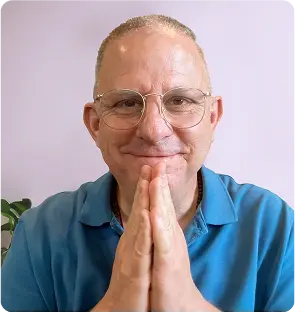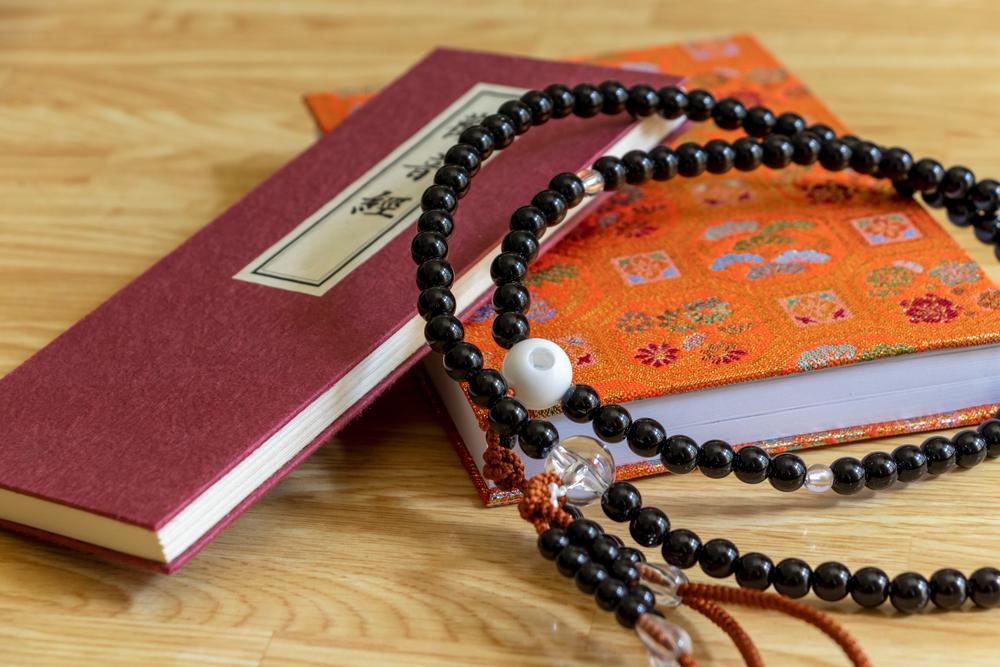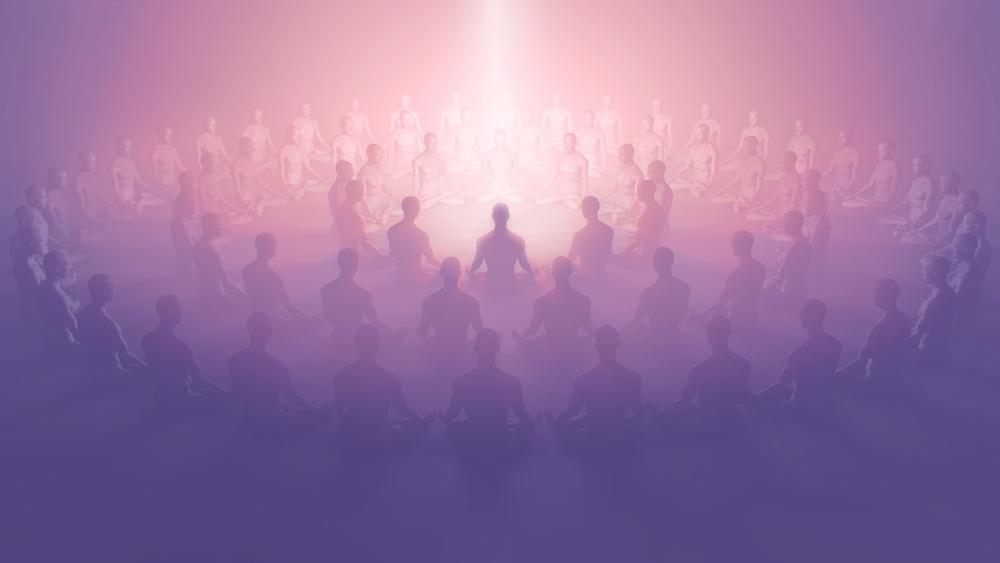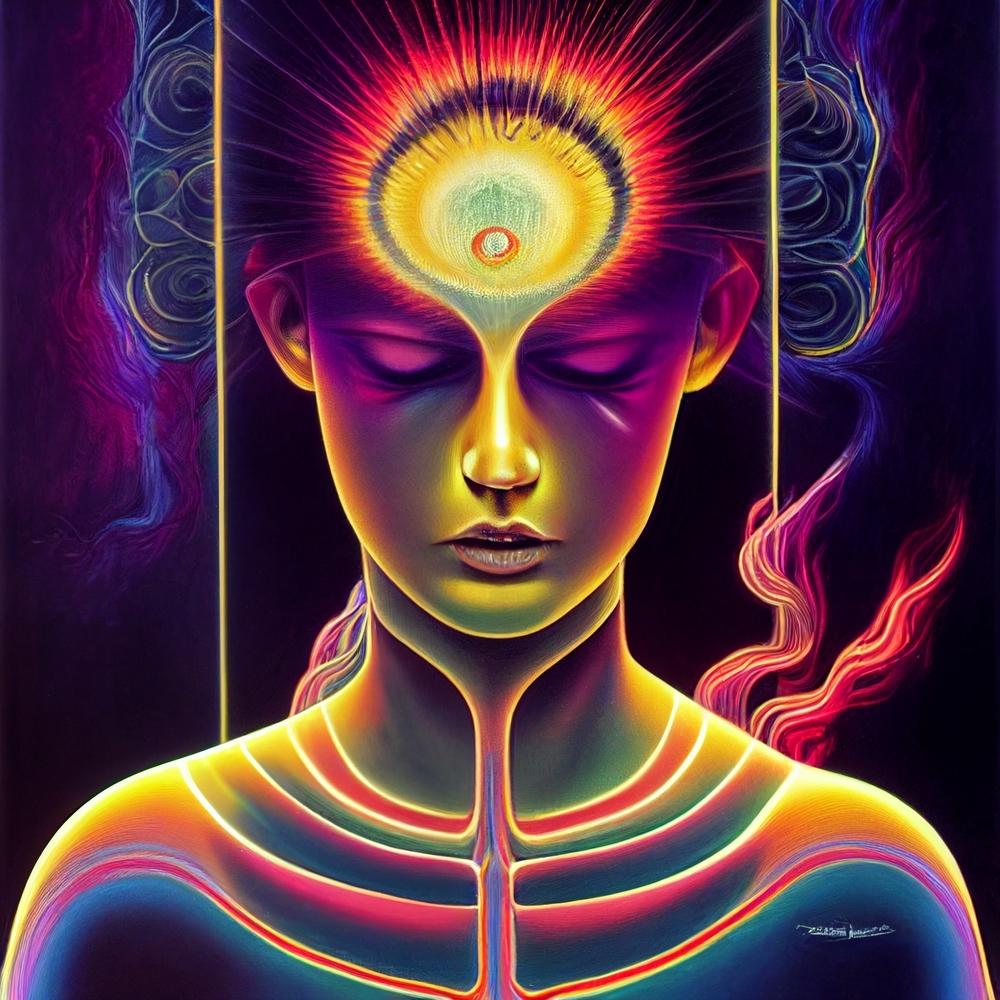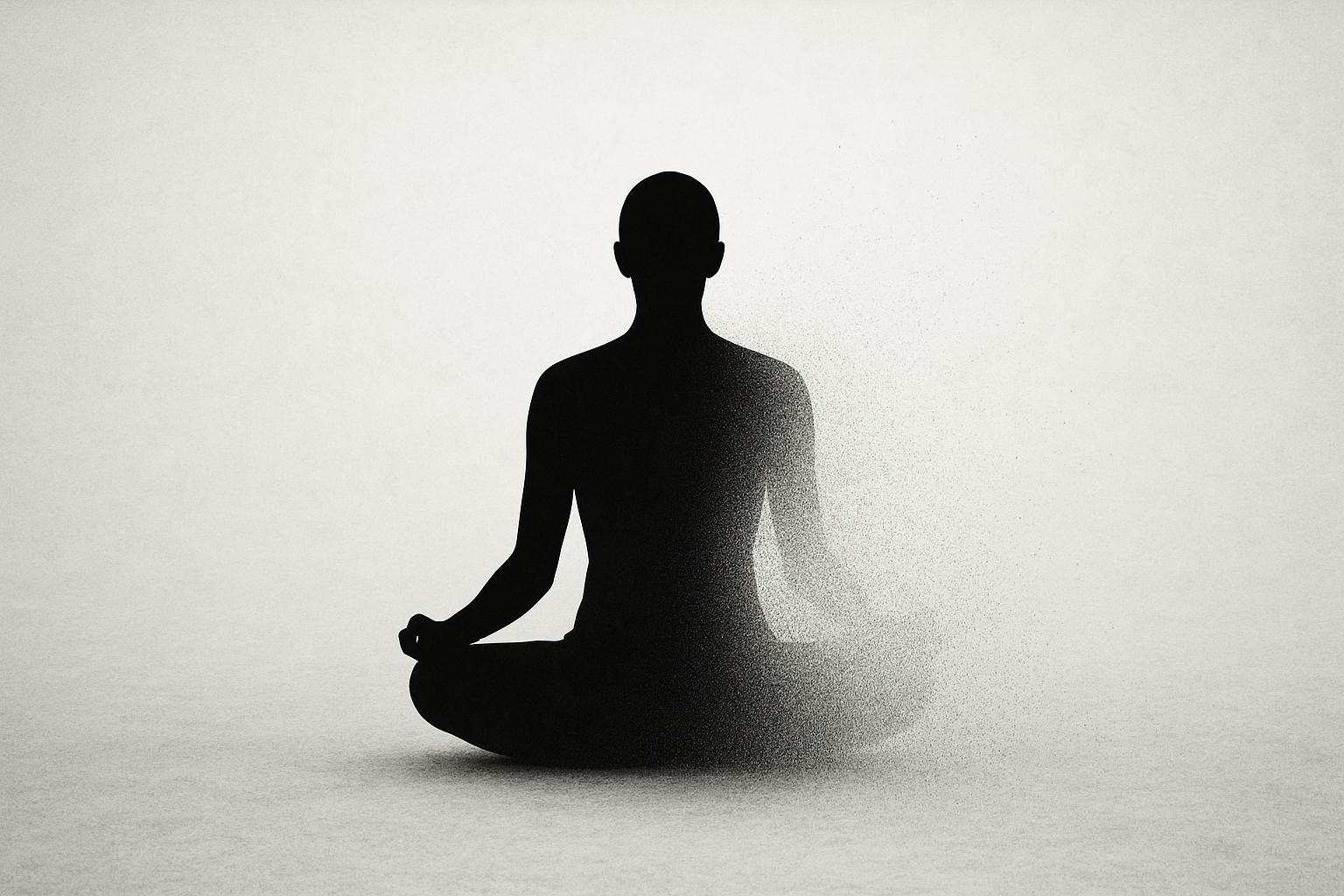
Stand before a mirror and consider what you’re seeing. That reflection appears solid, continuous, stable – a singular “you” that has persisted through time. Yet modern physics reveals something extraordinary: the material you perceive as your body is actually 99.9999% empty space.
The atoms composing your flesh are vast voids with infinitesimal particles of matter separated by distances that, at their scale, are astronomical. You are far more absence than presence, more space than substance.
This insight from quantum physics offers a bridge between ancient wisdom and contemporary science, particularly the Advaita Vedanta teaching “Tat tvam asi” – “You are That.”
The phrase points to the fundamental unity between individual consciousness and universal reality, suggesting that what we experience as separate selfhood is actually an expression of something far more expansive. When we recognize that our apparent solidity is mostly emptiness, we begin to glimpse how this could be true.
The Soul as Energy Field
Dr. Zach Bush, triple board-certified physician and thought leader in regenerative medicine and consciousness, reclaims the concept of soul from purely religious territory and grounds it in observable physics. As he explains: “A soul has been captured by the religious world to describe something that will supersede your life. But on the science side, it’s a great description of the energy field that allows you to organize while in your mother’s womb.”
This reframing is revolutionary. What traditions have called “soul” isn’t supernatural but biophysical – the organizing intelligence that coordinates your development from a single cell into the staggeringly complex being you are today. Bush’s insight invites us to see soul not as doctrine but as demonstrable reality: the electromagnetic field that holds the blueprint of your becoming and maintains your coherence across a lifetime of constant change.
The Mystery of Cellular Differentiation
Bush describes a pivotal moment in embryonic development that reveals this organizing field at work. Around the 260th cellular replication, something remarkable happens: cells that have been dividing in seemingly identical fashion suddenly differentiate. They become kidney cells, heart cells, neurons, bone – each committing to a specific identity and function within the emerging organism. This is the point where potential crystallizes into form, where the map of who you will be begins to physically manifest.
But here’s what makes this profound: that map, Bush explains, is not found in the DNA itself. It’s not encoded in the genes or stored in the cellular machinery. The blueprint for what each cell becomes – a kidney, an organ system, a specific piece of the intricate whole – exists in the physics field. In the electromagnetic field. In the space between everything.
This is where materialist biology hits its limits and quantum physics must step in. The cells know what to become not because of information stored in molecules, but because they’re reading instructions from the field itself. The organizing principle isn’t chemical but electromagnetic. It’s held in what appears to be empty space but is actually teeming with information, pregnant with pattern, alive with intelligence.
You Are Vacuum Space
When Bush says “you are vacuum space,” this isn’t a put‑down, it’s a promotion. The 99.9999% of you that isn’t matter is not dead nothingness; it is the active field that holds your pattern and keeps reassembling you billions of times per second. That “empty” space is the organizing intelligence that knows how to keep calling you back into existence, moment after moment.
Think about your embryonic journey. One fertilized cell contained the potential for more than 260 distinct cell types. As it divides, each new cell carries the same DNA, yet at a critical threshold, differentiation begins: here, liver; there, brain; here, bone; there, gut.
This does not happen by random accident or local chemistry alone. It happens because the field is coordinating it. The electromagnetic field knows where each cell is, what stage it’s in, and how it relates to the whole, and it uses that spatial awareness to assign roles.
DNA provides the parts list, but the field provides the architecture and choreography. The genes are vocabulary; the field is grammar and syntax. The field is the conductor, and your trillions of cells are the orchestra. Without the conductor, the same instruments and notes become noise. With the field, they become a symphony called “you.”
The Particle Expression of Light
Bush articulates this quantum reality with clarity: “Your body may seem solid, but it is actually a particle expression of a light force within you.” This isn’t metaphor – it’s quantum mechanics. What we experience as matter is light energy turning wave into particle, giving us the impression of solidity when we are fundamentally something else entirely.
In his explorations of consciousness and physics, Bush reveals the computational miracle at the heart of this process: “Every millionth of a second, our bodies make billions of calculations that decide who we are today. With an endless number of possibilities in which our bodies can manifest, you may wonder: how does it express the vibration of an energy field that we call a soul? It does so by projecting a hologram as our physical reality.”
This holographic projection isn’t science fiction – it’s the best description physics can offer for what’s actually happening. Light energy, expressing through the electromagnetic field, creates the appearance of your body moment to moment. The field holds your pattern, and that pattern organizes photons and particles into the specific configuration that shows up as you.
The Continuous Reconstitution
There is something profoundly mysterious happening beneath the surface of your everyday experience. Each moment, you are dissolving and reconstituting at scales too small and too fast for consciousness to track. The patterns that create the experience of your body flicker in and out of existence millions of times per second, yet each time they reappear, they show up recognizably as you.
Bush describes this phenomenon in terms that honor both its scientific precision and spiritual implications: “We have an energetic centre that is continuous, cannot be destroyed and it steps in these physical bodies for a moment in time to express a particle moment of energetic expression of life. And that is you. You are a particle expression of an energetic force of life within you.”
The atoms in your body are replaced entirely over the course of years. The cells lining your gut regenerate every few days. Your skin sheds and renews constantly. Yet through all this material flux, something persists. That something is the field – the electromagnetic pattern that Bush identifies as the scientific basis for soul. It’s what maintained coherence through every stage of your development, from that first cell division through the critical differentiation around replication 260 and onward through every moment of your life since.
The Map Beyond Biology
What makes Bush’s insight so powerful is his recognition that this organizing map exists outside the bounds of traditional biology. When embryologists study cellular differentiation, they can describe the molecular signals, the gene expression cascades, the protein interactions. But they cannot fully explain how a cell “knows” its position in the developing organism, how it coordinates with cells at a distance, how the whole system maintains coherent organization through billions of simultaneous processes.
The answer lies in the physics field. The electromagnetic field that permeates and surrounds the developing embryo doesn’t just carry information – it is information. It’s a dynamic, multidimensional data structure that encodes spatial relationships, temporal sequences, and developmental trajectories. Every cell reads from this field and writes to it, participating in a vast collaborative computation that unfolds your life from potential into actuality.
This isn’t some vague “energy” in the pop-spiritual sense. It’s measurable electromagnetic activity that influences cellular behavior in ways that genes alone cannot account for. Researchers studying bioelectricity and morphogenetic fields are beginning to map how electrical gradients and field patterns guide everything from wound healing to organ regeneration to the determination of left-right body asymmetry – all processes that require cells to “know” things that cannot be explained by local chemical signals alone.
Soul as Quantum Reality
Religious traditions have long spoken of the soul as something eternal and essential, distinct from the physical body. For many in the modern West, this concept feels like wishful thinking or outdated metaphysics, incompatible with scientific materialism. Yet when we examine what physics actually reveals about our nature – particularly through Bush’s lens – the notion of soul begins to look less like supernatural belief and more like observable reality described in different language.
Bush’s reframing is precise: the soul is “the energy field that allows you to organize.” Not an ethereal ghost haunting your flesh, but the organizing principle itself – the electromagnetic field carrying the pattern of your coherent existence. This field emerged at your conception, guided every stage of your development, and continues coordinating the billions of processes that maintain you moment to moment.
If we define soul as the enduring information pattern that gives form and continuity to individual life, then science points directly toward its existence. The electromagnetic field that organized your body in your mother’s womb and coordinates your experience now is precisely such a pattern. It carries the “map” of you across time, allowing coherent selfhood to persist despite complete material turnover. It is both unique to you and inseparable from the larger field that permeates all of reality.
This understanding liberates the concept of soul from institutional ownership. Rather than something granted by a particular religious authority or theology, it becomes a universal feature of consciousness and physics. Every living being expresses this principle – a localized pattern of organization within the unified field, simultaneously individual and integral to the whole.
The ancient teaching “Tat tvam asi” captures this precisely. “You are That” points to the recognition that individual consciousness is not separate from universal consciousness but a particular expression of it. When you realize you are mostly empty space – vacuum space organized by an electromagnetic field – you see directly how this could be true. The space within you is not fundamentally different from the space outside you. The field organizing your body is continuous with the larger field. What you experience as “you” is like a wave in the ocean – distinct and recognizable yet never separate from the water itself.
The Biology of Light
Bush describes this quantum principle with elegant simplicity: “Light energy turns a wave into a particle, which gives us the impression of solidity.” This wave-particle duality isn’t abstract theory but the actual mechanism of your existence. You are light temporarily organizing itself into patterns dense enough to appear solid, sustained enough to maintain continuity, coherent enough to support consciousness.
Consider what this means practically. The hand you’re using to hold this page or scroll this screen is not fundamentally different from the light illuminating it. Both are electromagnetic phenomena – one oscillating at frequencies we perceive as matter, the other at frequencies we perceive as light. The boundary between you and the world around you becomes permeable, more like a gradient than a hard edge.
Bush emphasizes this truth: “This sense of solidity, the solid state of your hand, or your face, is the result of a quantum miracle. This particle appearance of waveforms, energetic waveforms, life force that are expressed for a moment as particles in every millionth of a second and you show up as a physical being. An expression of a much deeper and a much more true energetic being, a light being.”
This perspective doesn’t diminish your individuality – it reveals its true nature. You are a unique configuration that has never existed before and will never exist again, a specific harmony in the infinite symphony of energy patterns dancing through space. Your particular frequency, your distinctive resonance, is unrepeatable and irreplaceable. Yet simultaneously, you are made of the same fundamental substance as everything else: organized emptiness, coherent space, light learning to know itself.
The Space Between Everything
When Bush identifies the organizing map as existing “in the space between everything,” he’s pointing to one of the most profound paradoxes of quantum reality: emptiness is not empty. The vacuum of space – what comprises 99.9999% of your body – is not absence but presence of a different order. It’s the field. The electromagnetic field that holds information, guides organization, and maintains coherence.
Modern physics confirms this. The quantum vacuum isn’t nothing – it’s seething with virtual particles, electromagnetic fluctuations, and zero-point energy. It’s the ground state from which all manifest reality emerges. When Bush says you are vacuum space, he’s saying you are this: the creative potential organizing itself into temporary form, the field expressing itself as particular pattern, the void learning to dance.
This is why the map of your becoming couldn’t be found in biology alone. DNA provides instructions for building proteins, but it doesn’t explain how an embryo knows to put the heart on the left, how cells coordinate across distances, how the whole system maintains proportional relationships as it grows. These feats require field-level intelligence – information encoded in the electromagnetic patterns that permeate the apparently empty space within and around your developing form.
Two spots jump out as most in need of reshaping for clarity and impact:
- The “You Are Vacuum Space” section – it’s repeating earlier points and could be sharper and more visceral.
- The “Electromagnetic Memory: Karma as Information Field” section – brilliant content but too dense and academic for most readers.
Below are rewrites of those two only, keeping your core ideas and structure.
You Are Vacuum Space – rewritten
When Bush says “you are vacuum space,” this isn’t a put‑down, it’s a promotion. The 99.9999% of you that isn’t matter is not dead nothingness; it is the active field that holds your pattern and keeps reassembling you billions of times per second. That “empty” space is the organizing intelligence that knows how to keep calling you back into existence, moment after moment.
Think about your embryonic journey. One fertilized cell contained the potential for more than 260 distinct cell types. As it divides, each new cell carries the same DNA, yet at a critical threshold, differentiation begins: here, liver; there, brain; here, bone; there, gut. This does not happen by random accident or local chemistry alone. It happens because the field is coordinating it. The electromagnetic field knows where each cell is, what stage it’s in, and how it relates to the whole, and it uses that spatial awareness to assign roles.
DNA provides the parts list, but the field provides the architecture and choreography. The genes are vocabulary; the field is grammar and syntax. The field is the conductor, and your trillions of cells are the orchestra. Without the conductor, the same instruments and notes become noise. With the field, they become a symphony called “you.”
The Electromagnetic Memory: Karma as Information Field
The moment you recognize soul as an electromagnetic field organizing vacuum space, a deeper question appears: what exactly is this field carrying? If it holds the map of your physical becoming – guiding that crucial differentiation around the 260th replication – what else is encoded there? What persists in this organizing intelligence that Bush describes as continuous and indestructible?
Vedic wisdom offers a precise frame: karma as memory. Not “sin and punishment,” not cosmic bookkeeping, but information stored in the field of your being. In this view, the soul is an electromagnetic composite carrying multiple layers of memory, and those memories shape how your life expresses. You’re not dragging “bad karma” around like a divine criminal record; you’re moving through reality with a particular information pattern.
Teachers in that tradition describe several distinct types of memory that map beautifully onto this field model:
- Evolutionary memory: the deep, species‑level intelligence that knows how to build a human body at all. This is why you grew a human heart and lungs instead of a reptile’s. It’s written in the field long before your personal story begins.
- Genetic memory: the information of your lineage – ancestral tendencies, strengths, vulnerabilities – expressed through DNA but also held in the broader field that reads and interprets that code.
- Elemental memory: the way the fundamental “stuff” of your body – earth, water, fire, air, space – remembers how to cohere as a physical organism and interface with the material world.
- Sensory and conscious memory: everything you’ve seen, heard, tasted, touched, learned, and lived. Some of it sits in explicit recall; much more sinks into the field as pattern.
- Unconscious and inarticulate memory: the vast store of what you’ve experienced but can’t name – trauma, intuitions, body‑level knowing, skills you no longer think about but still have. This is the field’s own “under the radar” intelligence.
- Collective memory: the layer of the field that plugs into something larger than personal history – cultural currents, human archetypes, and perhaps consciousness itself.
Put together, these layers form your karmic field: not a moral sentence, but an informational signature. This composite pattern is what showed up in your mother’s womb and began telling cells how to arrange themselves. Around that 260th replication, when differentiation starts, the field is reading from this entire library – evolutionary memory to know what a kidney is, genetic memory to make it yours, elemental memory to give it substance, unconscious memory to fold in the conditions you’re arriving into.
Every moment since, your choices and experiences have been writing back into that field. Trauma distorts the signal, creating interference. Insight and healing increase coherence. Spiritual practice, in this light, is not about appeasing a god; it is about reorganizing the field – clearing corrupted data, resolving old patterns, restoring the original clarity of your signal.
Seen this way, karma is physics. The information in your field shapes what you notice, how you react, what repeats, not because a judge is rewarding or punishing you, but because electromagnetic patterns interact by resonance. Change the pattern and you change the life that plays out around it.
This is where Bush’s physics and the Vedic map meet. Soul is the electromagnetic field. Karma is the information stored in that field. Liberation is not escape from the body; it is the restoration of full coherence, when your individual pattern resonates cleanly with the larger field that holds everything. You don’t become something else; you stop fighting what you already are.
Living From the Field
Understanding yourself this way changes how you move through the world. If you are primarily an electromagnetic pattern arising in empty space, organized by a field that exists in the space between everything, then your relationship to matter becomes more flexible, more creative. You’re not bound by the apparent solidity of things, because you know that solidity is itself an appearance created by field interactions.
This awareness invites a different quality of attention. Rather than looking outward for meaning or validation, you can turn inward to attune to the intelligence that has organized you from the first cell division onward. Bush speaks to this innate wisdom: “I watch life restart, rebirth, in those moments that we call death. We have an energetic centre that is continuous, cannot be destroyed.”
This field – your soul in Bush’s scientific sense – has stewarded your development through unimaginable complexity. It coordinated the differentiation of cells around that 260th replication, ensuring kidney became kidney and neuron became neuron. It has maintained your coherence through trillions of cellular interactions, preserving continuity through constant material turnover. It carries a wisdom far older and deeper than your conscious mind.
Practically, this means learning to sense and trust the body’s field intelligence. It means recognizing symptoms not as random breakdowns but as communications from a system attempting to restore coherence. It means understanding that healing happens not just through external interventions but through supporting the field’s inherent organizing capacity.
Living from this awareness also dissolves rigid boundaries between self and world. When you recognize that what you are is mostly space continuous with the space around you – that your organizing field exists in the same electromagnetic continuum as all other fields – empathy and compassion become natural. Bush articulates this interconnection powerfully: “Humans aren’t the center of humanity. Humans aren’t the center of human consciousness. Humans are an amalgamation of biology on the planet that is expressing its collective intelligence through this human moment that we’re in.”
The Return to Wholeness
Each breath you take is an instance of the field recommitting to your existence, reshaping billions of electromagnetic interactions so your particular story can continue unfolding. This happens whether you notice it or not, whether you believe in it or not. The organizing principle that Bush identifies as soul has been doing this work since before you had language to think about it and will continue until your individual pattern releases back into the unified field.
Bush offers a vision of what becomes possible when we recognize this truth: “As we wrap our heads around relativity and quantum physics we find out that you are a quantum miracle.” Not metaphorically miraculous – actually miraculous. The physics of your existence, properly understood, is more extraordinary than any mythology. You are waveforms momentarily appearing as particles, emptiness organizing itself into temporary coherence, the eternal expressing itself through the particular.
Recognizing this doesn’t make you special – it makes you participant in the fundamental nature of reality. The 99.9999% emptiness that composes you is the same emptiness that composes stars, trees, and everyone you’ve ever loved. The organizing intelligence that maintained your coherence through that critical differentiation around replication 260 – that field-level map that exists in the space between everything – is the same intelligence flowering in every form throughout the universe. You are both utterly unique and completely inseparable from the whole.
This is what “Tat tvam asi” has always meant. Not that you should become That, or believe in That, but that you already are That and always have been. The separate self you work so hard to maintain is like a wave forgetting it’s ocean, a pattern of space and light that has temporarily forgotten its own nature. Remembering doesn’t require adding anything or achieving anything. It simply means recognizing what you’ve always been: emptiness organized into temporary form, vacuum space held in exquisite coherence by an electromagnetic field that Bush rightly calls soul.
In that recognition, balance and purpose cease being problems to solve and become natural expressions of alignment with what already is. Bush writes: “The whole is in every fractal. Each tear holds the world.” You discover you’ve been held all along by something vaster than you imagined, and that what you most essentially are was never born and will never die – only the particular form shifts, while the organizing principle continues, timeless and complete.
The Anatomy of the Soul: Dr. Zach Bush’s Vision
Dr. Zach Bush has spent his career bridging the worlds of rigorous science and spiritual understanding, refusing to let either domain monopolize truth. As a physician triple board-certified in Internal Medicine, Endocrinology and Metabolism, and Hospice and Palliative Care, he brings both clinical precision and profound humanity to his exploration of consciousness and health.
Through his work at zachbushmd.com, Bush has become one of the most compelling voices illuminating the connection between human biology and planetary ecology, between the microscopic intelligence of cells and the cosmic intelligence of fields. His insights into the electromagnetic nature of soul – the organizing principle that coordinates our development and maintains our coherence – offer a way forward for those who cannot accept the false choice between scientific materialism and religious dogma.
What Bush reveals is that the soul is neither supernatural nor metaphorical. It is the energy field that allows organization to emerge from chaos, that guides differentiation at that critical 260th replication, that exists in the space between everything and maintains the map of your becoming. It is physics. It is measurable. It is real.
And it is, quite literally, who you are: not the matter that temporarily coheres into your form, but the field-level intelligence organizing that matter. Not the 0.0001% of you that appears solid, but the 99.9999% that is vacuum space – pregnant with information, alive with pattern, continuous and indestructible.
This is the anatomy of the soul that Bush offers us: scientifically grounded, spiritually profound, and utterly transformative for those willing to recognize that they are not primarily matter at all, but light learning to know itself through the exquisite miracle of embodied consciousness. You are, in Bush’s precise and beautiful articulation, a quantum miracle – and the space that comprises you is where the eternal and the particular meet, where Tat tvam asi ceases to be philosophy and becomes lived, breathable, undeniable truth.


